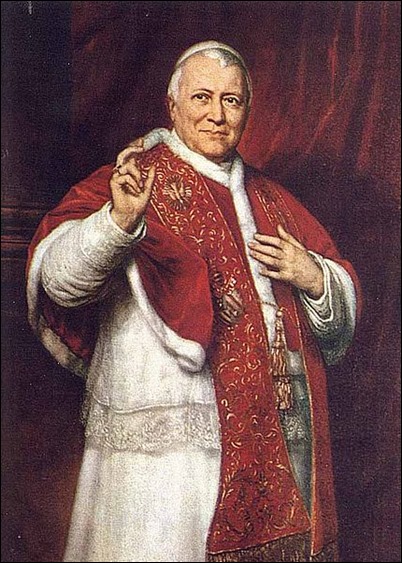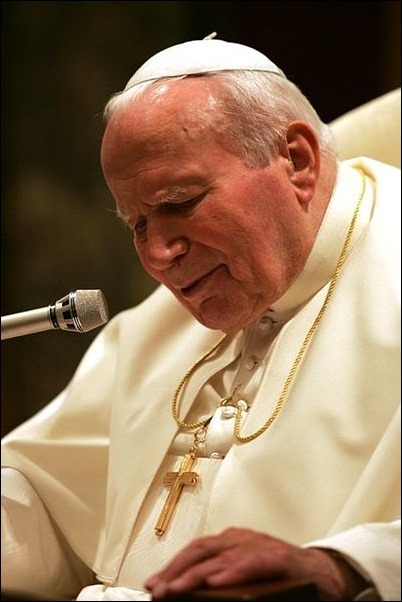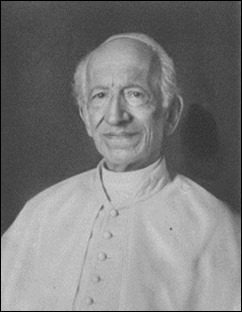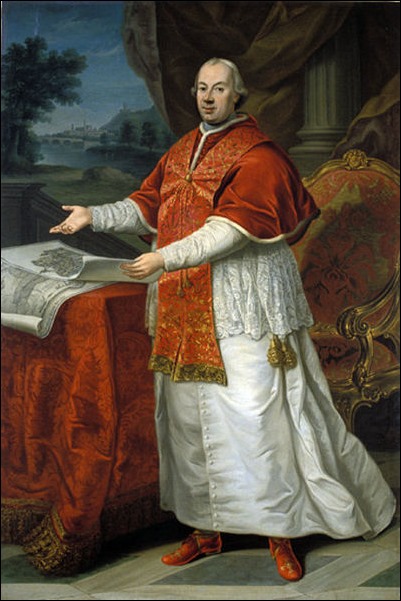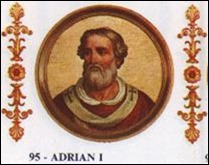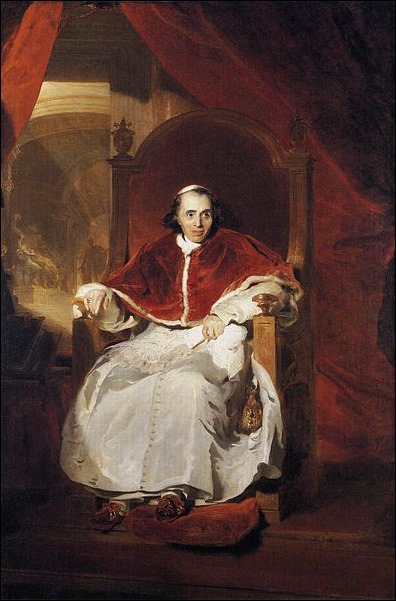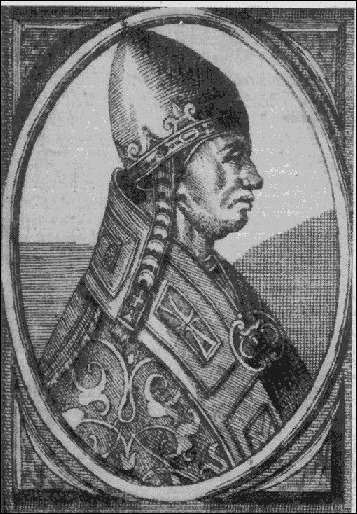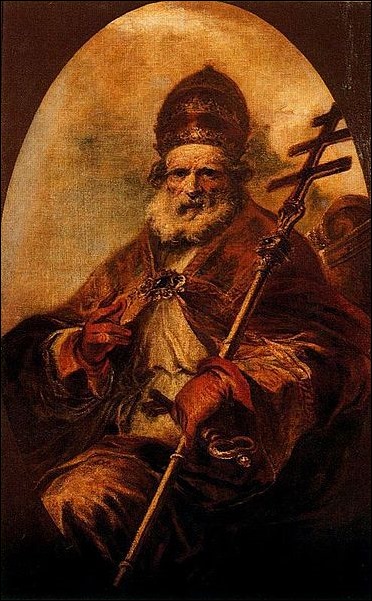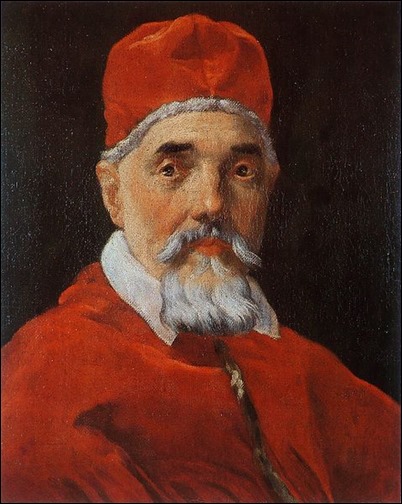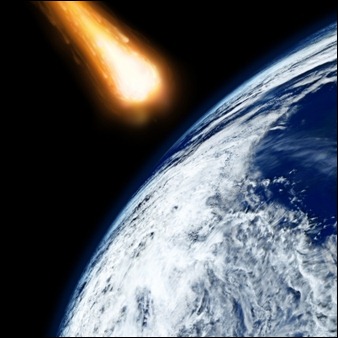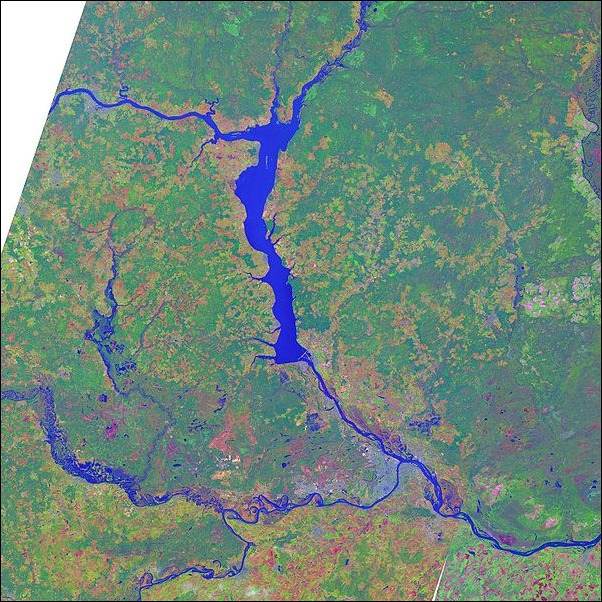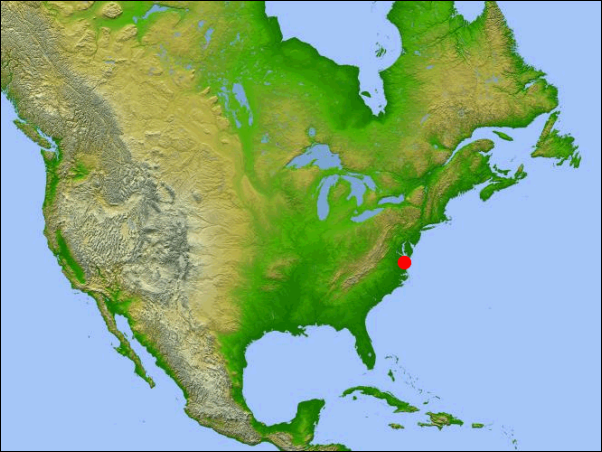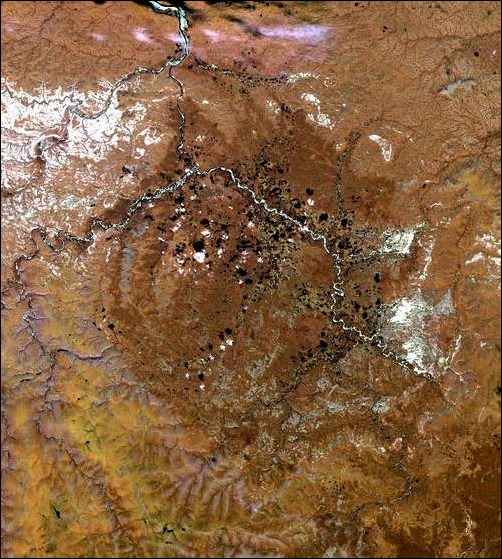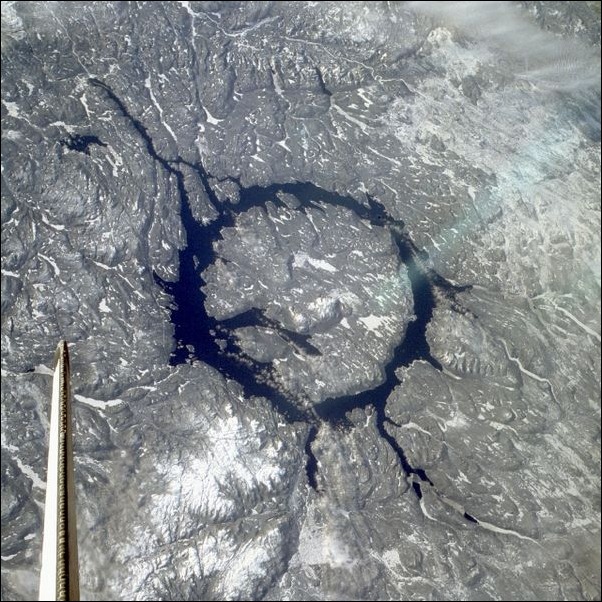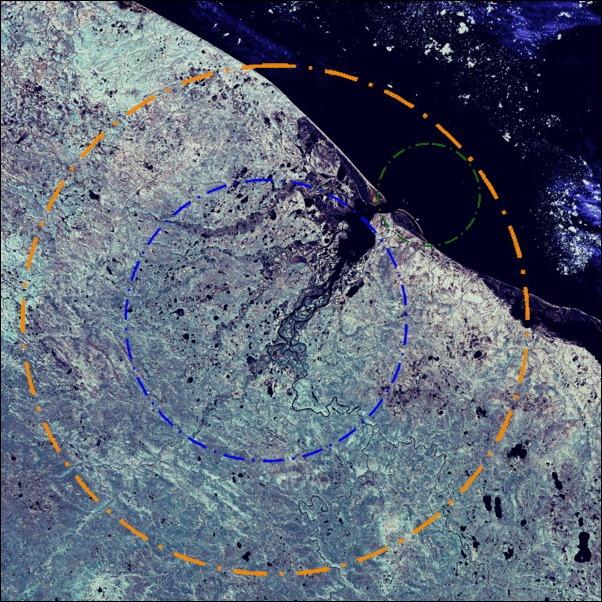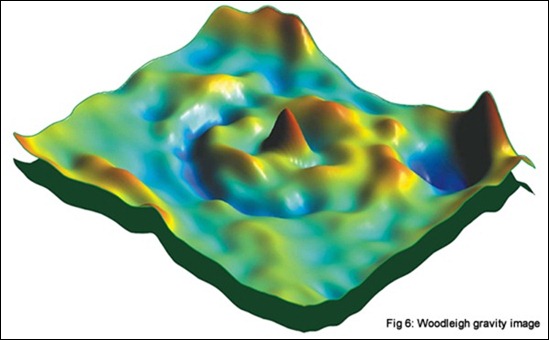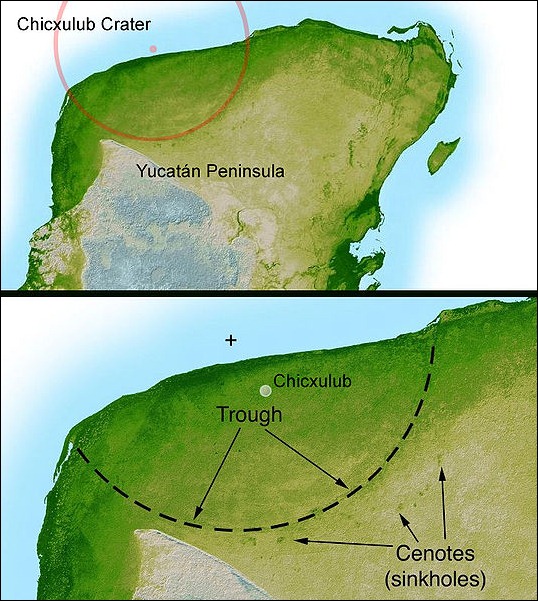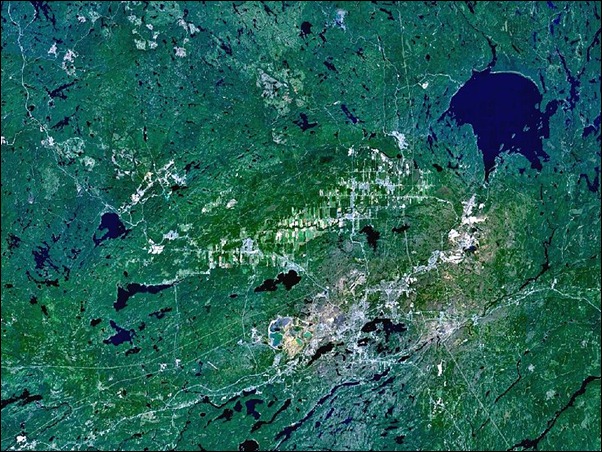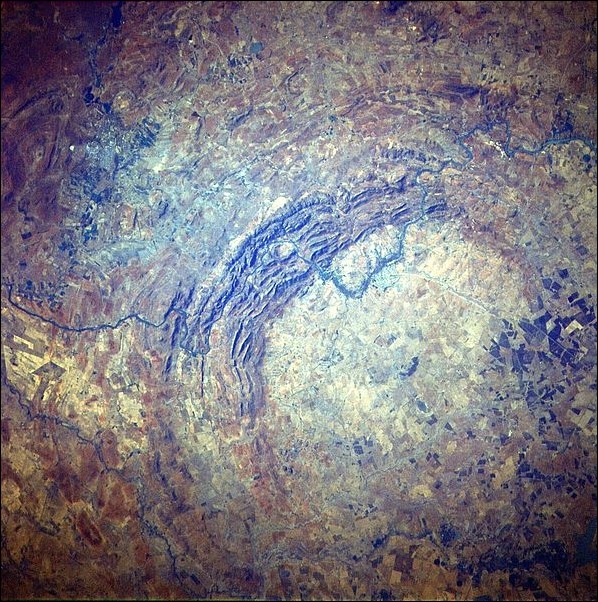The pope is the Bishop of Rome and the leader of the worldwide Catholic Church. In the Catholic Church, the Pope is regarded as the successor of Saint Peter, the Apostle. Saint Peter, who was the first Bishop of Rome and the first pope, is thought to have reigned for over 30 years (AD 29 - 64?/67?), but the exact length is not reliably known.
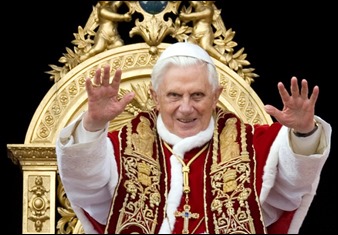 The current office-holder is Pope Benedict XVI [image left], who was elected in a papal conclave on 19 April 2005 and is expected to hold office until today, 28 February 2013, the date on which he has said he will resign.
The current office-holder is Pope Benedict XVI [image left], who was elected in a papal conclave on 19 April 2005 and is expected to hold office until today, 28 February 2013, the date on which he has said he will resign.
He will become the first pope to resign since Pope Gregory XII in 1415, and the first to do so voluntarily since Pope Celestine V in 1294.
The average length of the 265 papacies, prior to that of Benedict XVI, is about 7.2 years. Who are the 10 longest reigning popes? The following list gives the answer:
1. Pius IX (1846-1878): 31 years, 7 months and 23 days (11,560 days)
Pope Pius IX (May 13, 1792 – February 7, 1878), born Giovanni Maria Mastai-Ferretti, was the longest-reigning elected Pope in the history of the Catholic Church, serving from 16 June 1846 until his death, a period of nearly 32 years. During his pontificate, he convened the First Vatican Council in 1869, which decreed papal infallibility. The Pope defined the dogma of the Immaculate Conception of the Blessed Virgin Mary, meaning that Mary was conceived without original sin. Pius IX also granted the Marian title of Our Mother of Perpetual Help, a famous Byzantine icon from Crete entrusted to the Redemptorist priests. In addition to this, Pius IX was also the last Pope to rule as the Sovereign of the Papal States, which fell completely to Italian nationalist armies by 1870 and were incorporated into the Kingdom of Italy. After this, he voluntarily became the first "Prisoner of the Vatican". He was beatified in 2000. [link]
2. John Paul II (1978-2005): 26 years, 5 months and 18 days (9,665 days)
Pope John Paul II (18 May, 1920 - 2 April, 2005), born Karol Józef Wojtyła, reigned as Head of the Catholic Church from 1978 until his death in 2005. He was the second-longest serving Pope in history and the first non-Italian since 1523.
A very charismatic figure, John Paul II was acclaimed as one of the most influential leaders of the 20th century. He is credited with helping to end Communist rule in his native Poland and eventually all of Europe. John Paul II significantly improved the Catholic Church's relations with Judaism, Islam, the Eastern Orthodox Church, and the Anglican Communion. Though criticised by progressives for upholding the Church's teachings against artificial contraception and the ordination of women, and by traditionalists for his support of the Church's Second Vatican Council and its reform, he was also widely praised for his firm, orthodox Catholic stances.
He was one of the most-travelled world leaders in history, visiting 129 countries during his pontificate. As part of his special emphasis on the universal call to holiness, he beatified 1,340 people and canonised 483 saints, more than the combined tally of his predecessors during the preceding five centuries. He named most of the present College of Cardinals, consecrated or co-consecrated a large number of the world's past and current bishops, and ordained many priests. A key goal of his papacy was to transform and reposition the Catholic Church. His wish was "to place his Church at the heart of a new religious alliance that would bring together Jews, Muslims and Christians in a great [religious] armada". On 19 December 2009, John Paul II was proclaimed venerable by his successor Pope Benedict XVI and was beatified on 1 May 2011. [link]
3. Leo XIII (1878-1903): 25 years, 5 months and 1 day (9,281 days)
Pope Leo XIII (March 2, 1810 - July 20, 1903), born Vincenzo Gioacchino Raffaele Luigi Pecci to an Italian comital family, was the 256th Pope of the Catholic Church, reigning from 1878 to 1903. He was the oldest pope (reigning until the age of 93), and had the third longest pontificate.
He is known for intellectualism, the development of social teachings with his encyclical Rerum Novarum and his attempts to define the position of the Church with regard to modern thinking. He influenced Roman Catholic Mariology and promoted both the rosary and the scapular. He issued a record eleven encyclicals on the rosary, approved two new Marian scapulars and was the first Pope to fully embrace the concept of Mary as mediatrix. [link]
4. Pius VI (1775-1799): 24 years, 6 months and 15 days (8,962 days)
Pope Pius VI (December 27, 1717 – August 29, 1799), born Giovanni Angelo Braschi, was an Italian priest of the Roman Catholic Church and the 251st Pope from 1775 to 1799.
Pope Clement XIII named him treasurer of the Roman Church in 1766. [link]
5. Adrian I (772-795): 23 years, 10 months and 25 days (8,729 days)
Pope Adrian I (c. 700 – December 25, 795) was pope from 1 February 772 to 25 December 795. He was the son of Theodore, a Roman nobleman. [link]
6. Pius VII (1800-1823): 23 years, 5 months and 7 days (8,560 days)
Pope Pius VII (August 14, 1742 – August 20, 1823), born Barnaba Niccolò Maria Luigi Chiaramonti, was an Italian priest of the Roman Catholic Church and the 252nd Pope from 14 March 1800 to 20 August 1823. [link]
7. Alexander III (1159-1181): 21 years, 11 months and 24 days (8,029 days)
Pope Alexander III (c. 1100 – August 30, 1181), born Orlando Bandinelli, was an Italian priest of the Roman Catholic Church and the 171st Pope was Pope from 1159 to 1181. [link]
8. St. Sylvester I (314-335): 21 years, 11 months and 1 day (8,005 days)
Pope Sylvester I (unknown – December 31, 335) served as pope from 31 January 314 to 31 December 335, succeeding Pope Miltiades. He filled the See of Rome at an important era in the history of the Catholic Church, yet very little is known of him. The accounts of his papacy preserved in the Liber Pontificalis (7th or 8th century) contain little more than a record of the gifts said to have been conferred on the Church by Constantine I, but it does say that he was the son of a Roman named Rufinus. [link]
9. St. Leo I (440-461): 21 years, 1 month, and 13 days. (7,713 days)
Pope Leo I, also known as Leo the Great (c. 391 or 400 – 10 November 461) was Bishop of Rome from 29 September 440 to 10 November 461.
He was an Italian aristocrat, and was the first pope to have been called "the Great". He is perhaps best known for having met Attila the Hun in 452 and persuading him to turn back from his invasion of Italy. He is also a Doctor of the Church, most remembered theologically for issuing the Tome of Leo, a document which was foundational to the debates of the Ecumenical Council of Chalcedon. The Council of Chalcedon, the fourth ecumenical council, dealt primarily with Christology, and elucidated the orthodox definition of Christ's being as the hypostatic union of two natures—divine and human—united in one person, "with neither confusion nor division". It was followed by a major schism associated with Monophysitism, Miaphysitism and Dyophysitism. [link]
10. Urban VIII (1623-1644): 20 years, 11 months and 24 days (7,664 days)
Pope Urban VIII (baptised April 5, 1568 – July 29, 1644), born Maffeo Barberini, was pope from 1623 to 1644. He was the last pope to expand the papal territory by force of arms, and was a prominent patron of the arts and reformer of Church missions. However, the massive debts incurred during his papacy greatly weakened his successors, who were unable to maintain the papacy's longstanding political and military influence in Europe. He was also involved in a controversy with Galileo and his theory on heliocentrism during his reign. [link]





